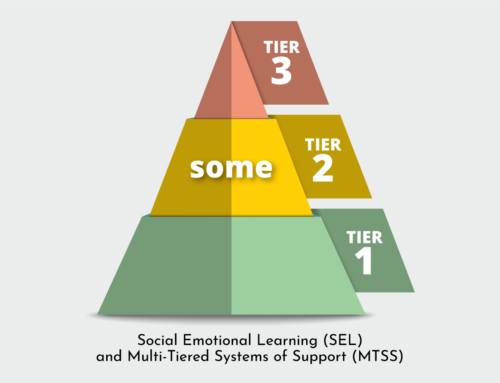Professional learning for teachers and career-connected learning for students
The connection between the learning that occurs in the classroom and applying it to real-life work experience is essential to long-term fulfillment and success.
That’s the premise of ESD 112’s healthy list of STEM (Science, Technology, Engineering and Math) Initiatives that collectively span six counties and 30 school districts. The Southwest Washington STEM Network partners local STEM business and industry with K-12 education to prepare kids for college and career, in 7 of these districts. Linking the two initiatives together creates a cohesive system of education and support for students of all abilities, from large and small districts, urban and rural alike. If students are to learn STEM skills, teachers must have powerful strategies at their fingertips to teach them. Engaging in real-world problems and learning from professionals in STEM fields help students understand what a STEM Career looks like in our region.
STEM Director Vickei Hrdina is excited to see STEM learning, teacher development and business mentoring and support come together so seamlessly. “What I think is unique about the collaboration between STEM business and industry and K-12 education is that each can be authentically connected to classrooms,” she said about the STEM Network. “We can support equitable instruction across STEM fields when we use the actual examples of applications of STEM directly in curriculum and instruction, and, in turn, skills that students learn prepare them to contribute to our increasingly STEM-based economy.”
ESD 112 STEM Initiatives
In the U.S. there is an inadequate pipeline of teachers skilled in STEM subjects. According to the National Math & Science Initiative, in 2007 about one third of public middle school science and math teachers either did not major in the subject they teach and/or are not certified to teach it. Increasing teacher enthusiasm and aptitude in STEM education is the first step toward increasing the flow of STEM students. This is where ESD 112’s STEM Initiatives Programs come in.
The initiatives focus on teacher learning and student supports to integrate STEM curriculum into K-12 content areas. The programs are designed to promote equity between students and districts, so that kids are not limited in their STEM opportunities by their zip code, ethnicity or gender.
One such program, nPower Girls, invites grades 4-8 Math and Science teachers from Castle Rock, Longview, Mill A, Mt. Pleasant, Naselle-Grays River Valley School, Ridgefield, Three Rivers Christian School, and Wishram to participate in a three-year professional development program. nPower Girls is aimed at strengthening instructional practices that support female students’ learning in STEM and connect them with mentors around the state. The partnership with the STEM Network has allowed teachers from Battle Ground and Vancouver districts to join to the nPower program as well.
ESD 112 is also home to the region’s STEM Materials Center. Starting with six school districts in 1997, the STEM Materials Center now includes almost every school district in Southwest Washington. The Materials Center provides STEM kits and professional development on how to use them effectively in the classroom. Industry relationships with the SW WA STEM Network are working with Materials Center staff to integrate real-world problems into the kits to make them more relevant, engaging and better able to support NGSS and Common Core standards.
A NATIONAL PRIORITY FOR STEM EDUCATION
In recent years, the need for improvements in the education of STEM subjects has been well-documented. President Obama and the Department of Education have set a clear national priority for STEM education, increasing the impact of federal funding in five key areas:
- Improving STEM instruction in preschool through 12th grade
- Increasing and sustaining public and youth engagement with STEM
- Improving the STEM experience for undergraduate students
- Better serving groups historically underrepresented in STEM fields
- Designing graduate education for tomorrow’s STEM workforce
Source: Department of Education
Southwest Washington STEM Network
According to the Department of Education, “only 16 percent of American high school seniors are proficient in math and interested in a STEM career.” The trickle of students from K–12 who go on to pursue a STEM career is further diminished by the fact that only half who attain STEM degrees choose to work in a related field. Combine that with the fact that projected growth for STEM jobs is expected to continue to outpace non-STEM jobs over the next decade (10.1% vs. 6.5% according to the Bureau of Labor Statistics), and it’s easy to see why the lack of qualified workers is being called a National STEM Crisis.
The Southwest Washington STEM Network, a collective of public and private stakeholder organizations, recognize the importance of STEM education to our economic future. Through collaboration with education, industry and community partners, the Network seeks to enhance and promote challenging, relevant and integrated STEM learning experiences for all students in the region.
STEM industries drive the local economy, making up almost 40% of Southwest Washington’s gross regional product and providing wages that make on average over $30,000 more than non-STEM jobs. STEM education is about integrating technical ability with the essential skills necessary to excel in the 21st century workplace, regardless of sector.
The STEM Network helps connect students with local industries for hands-on, work-based learning experiences. These experiences are crucial to fostering student interest in STEM fields and connecting businesses with potential interns and future employees.
For more information about ESD 112 STEM Initiative Programs, contact STEM Director Vickei Hrdina at 360.952.3247.
SW WA STEM NETWORK MEMBERS
2016-17
- Battle Ground Public Schools
- Camas School District
- Clark College
- Clark County High Tech Council
- Columbia River Economic Development Council
- Educational Service District 112
- Evergreen Public Schools
- Hockinson School District
- Kalama School District
- nLight Photonics
- SEH-America
- Vancouver Public Schools
- Washington State University Vancouver
- Washougal School District
- Workforce Southwest Washington





 ESD 112 equalizes educational opportunities for learning communities through innovative partnerships, responsive leadership, and exceptional programs.
ESD 112 equalizes educational opportunities for learning communities through innovative partnerships, responsive leadership, and exceptional programs.